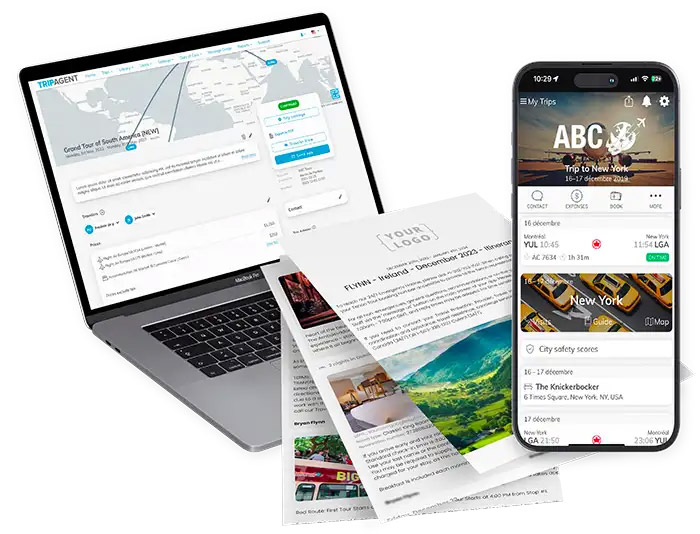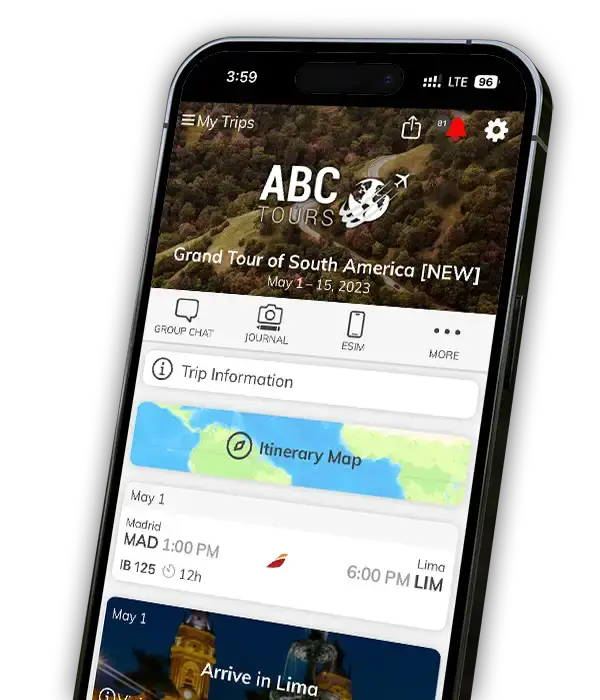How to Create Travel Documents That Delight Your Clients
Travel agencies have always been trusted to guide their clients through the complexities of a trip. One of the most tangible ways to build that trust is through the travel documents you provide. Done well, they reassure your travelers, reduce calls to your team, and leave a lasting impression of professionalism and care.
Why Travel Documents Matter
Travel documents are much more than receipts and confirmations. They are the bridge between booking and travel. A clear, well-organized itinerary makes your client feel confident and excited about their journey. It also saves your agency time by reducing the number of questions about tickets, transfers, or hotel details.
For corporate travel, documents also play a critical role in risk management and duty of care, ensuring that employees are safe, informed, and supported.
Think of travel documents as a reflection of your agency’s brand. A confusing, cluttered itinerary gives the impression of disorganization. A polished, thoughtful document shows that your agency is attentive, reliable, and invested in the traveler’s experience.
Choosing the Right Format
 Travelers today expect flexibility. A single format is rarely enough. Instead, provide three complementary options:
Travelers today expect flexibility. A single format is rarely enough. Instead, provide three complementary options:
• Mobile app: Always accessible, updated in real time, and practical for on-the-go changes. It can include push notifications, live updates, and even maps that work offline.
• Online itinerary: A simple web link that can be opened on any device, perfect for sharing with colleagues or family. It’s especially convenient for corporate travelers who need to forward details to managers or assistants.
• PDF or print: A reliable option for travelers who want something tangible, or when official documents are required, such as for visas or expense reports.
By offering all three, you ensure every type of traveler is comfortable. And importantly, all versions should be consistent.
The Essentials of a Good Itinerary
When designing your travel documents, think from the traveler’s perspective. What will they need most urgently? What information reassures them? The structure should feel natural and easy to follow:
- Trip at a glance: Names, destinations, and dates right at the top. This gives instant reassurance that the document is correct.
- Next step: The very next flight, hotel, or transfer should be highlighted, since travelers often only want to know what’s happening immediately.
- Day-by-day plan: Each day presented clearly with times, addresses, and important notes. This helps travelers picture their journey.
- Vouchers and tickets: Easy to find, easy to scan, and accompanied by clear instructions for use.
- Emergency information: Support numbers and local contacts on every page or screen, so travelers never have to search in a panic.
- Local details: Currency, time zones, safety tips, or reminders about visas and documents. These small touches make a big difference.
Adding useful extras like weather forecasts or destination highlights can also elevate the experience, making the itinerary feel like a travel companion rather than just a list of bookings.
The Power of Images
 One of the most underestimated elements of travel documents is imagery. As soon as clients book a trip, they begin to imagine themselves there. A picture of their hotel room, a scenic view of the city skyline, or even a snapshot of the local food market can spark excitement well before departure.
One of the most underestimated elements of travel documents is imagery. As soon as clients book a trip, they begin to imagine themselves there. A picture of their hotel room, a scenic view of the city skyline, or even a snapshot of the local food market can spark excitement well before departure.
By integrating images directly into itineraries, you invite travelers to start their journey in their mind. Each photo tells a story — the café where they’ll sip espresso, the beach where they’ll relax, or the museum they’ll explore. These visual cues not only build anticipation but also strengthen the emotional connection to the trip.
For agencies, images also help with clarity. A meeting point illustrated with a photo is far more effective than a written description alone. Including hotel logos, airline branding, or maps makes documents more intuitive and reduces confusion.
In short, images transform itineraries from functional documents into experiences in themselves. They help clients dream, prepare, and travel in their imagination long before boarding the plane.
Design That Builds Confidence
Good design doesn’t need to be flashy, but it should be thoughtful. Clear fonts, a logical hierarchy, and enough white space make information easy to digest. Use icons where they help understanding, but never rely on color alone to signal status. A traveler should be able to glance quickly at the page and know what matters most.
And don’t forget: combining design with images amplifies impact. A visually engaging itinerary is far more likely to be remembered, shared, and praised.
Supporting Business Travelers
Corporate clients have specific needs. Include company travel policies directly in their business travel app so employees know what is allowed. Add risk alerts and travel advisories to help them make safe decisions. Provide simple ways to contact the agency if a trip is disrupted, whether through a chat button in the app or a 24/7 phone number.
Managers and travel coordinators also benefit when itineraries are designed with them in mind. Online itineraries that can be easily shared, printed, or exported to calendars make corporate travel smoother for everyone involved.
Service Beyond the Itinerary
Great travel documents also open the door to better communication. Contact button or a clear support email / phone number give travelers confidence that help is close at hand. Proactive updates — such as a flight delay or gate change — show that you are looking out for them, not just after the booking but throughout the journey.
Encourage feedback too. Simple satisfaction surveys or follow-up emails let travelers share their thoughts and give your agency insights into where improvements can be made.
Making It Work for Your Agency
Behind the scenes, agencies should streamline how documents are created. Pull data from booking systems, enrich it with useful details, and present it consistently across app, web, and PDF.
Regularly review your documents from a traveler’s perspective. Are names spelled correctly? Are time zones clear? Can a voucher be scanned easily? A little extra care at this stage prevents stress for both travelers and your team.
Building Loyalty Through Travel Documents
The quality of your travel documents doesn’t just affect a single trip — it affects the overall perception of your agency. A seamless, thoughtful experience builds loyalty and word-of-mouth recommendations. Clients remember when their trip felt effortless, and much of that feeling comes from having reliable, easy-to-use information at their fingertips.
And images add to this effect: travelers are more likely to share visually appealing documents with friends or on social media. A beautifully illustrated itinerary becomes a talking point, giving your agency extra visibility.
In a competitive industry, this attention to detail is what sets agencies apart. It turns travel documents into a marketing tool: every time your client shows their itinerary to a colleague, family member, or immigration officer, it reflects the professionalism of your agency.
Final Thoughts
Travel documents may not be the first thing travelers think about when booking a trip, but they become indispensable once the journey begins. By investing in clear, consistent, and well-designed itineraries — across mobile, online, and PDF — your agency delivers peace of mind and a sense of professionalism that clients will remember long after their trip.
The best travel documents go beyond logistics. They tell a story, set expectations, and reinforce that your agency is there every step of the way. Adding images allows clients to start their journey in their imagination, building excitement and anticipation long before departure. When design, clarity, and emotion come together, your travel documents become one of your agency’s strongest assets.

